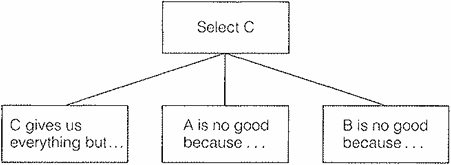

Grammar


Tenses


Present

Present Simple

Present Continuous

Present Perfect

Present Perfect Continuous


Past

Past Simple

Past Continuous

Past Perfect

Past Perfect Continuous


Future

Future Simple

Future Continuous

Future Perfect

Future Perfect Continuous


Parts Of Speech


Nouns

Countable and uncountable nouns

Verbal nouns

Singular and Plural nouns

Proper nouns

Nouns gender

Nouns definition

Concrete nouns

Abstract nouns

Common nouns

Collective nouns

Definition Of Nouns

Animate and Inanimate nouns

Nouns


Verbs

Stative and dynamic verbs

Finite and nonfinite verbs

To be verbs

Transitive and intransitive verbs

Auxiliary verbs

Modal verbs

Regular and irregular verbs

Action verbs

Verbs


Adverbs

Relative adverbs

Interrogative adverbs

Adverbs of time

Adverbs of place

Adverbs of reason

Adverbs of quantity

Adverbs of manner

Adverbs of frequency

Adverbs of affirmation

Adverbs


Adjectives

Quantitative adjective

Proper adjective

Possessive adjective

Numeral adjective

Interrogative adjective

Distributive adjective

Descriptive adjective

Demonstrative adjective


Pronouns

Subject pronoun

Relative pronoun

Reflexive pronoun

Reciprocal pronoun

Possessive pronoun

Personal pronoun

Interrogative pronoun

Indefinite pronoun

Emphatic pronoun

Distributive pronoun

Demonstrative pronoun

Pronouns


Pre Position


Preposition by function

Time preposition

Reason preposition

Possession preposition

Place preposition

Phrases preposition

Origin preposition

Measure preposition

Direction preposition

Contrast preposition

Agent preposition


Preposition by construction

Simple preposition

Phrase preposition

Double preposition

Compound preposition

prepositions


Conjunctions

Subordinating conjunction

Correlative conjunction

Coordinating conjunction

Conjunctive adverbs

conjunctions


Interjections

Express calling interjection

Phrases

Sentences


Grammar Rules

Passive and Active

Preference

Requests and offers

wishes

Be used to

Some and any

Could have done

Describing people

Giving advices

Possession

Comparative and superlative

Giving Reason

Making Suggestions

Apologizing

Forming questions

Since and for

Directions

Obligation

Adverbials

invitation

Articles

Imaginary condition

Zero conditional

First conditional

Second conditional

Third conditional

Reported speech

Demonstratives

Determiners


Linguistics

Phonetics

Phonology

Linguistics fields

Syntax

Morphology

Semantics

pragmatics

History

Writing

Grammar

Phonetics and Phonology

Semiotics


Reading Comprehension

Elementary

Intermediate

Advanced


Teaching Methods

Teaching Strategies

Assessment
Choosing Among Alternatives
المؤلف:
BARBARA MINTO
المصدر:
THE MINTO PYRAMID PRINCIPLE
الجزء والصفحة:
54-3
2024-09-11
924
Choosing Among Alternatives
Frequently managers ask their subordinates to analyze a problem and come up with a solution, adding 'And let me see your alternatives." Strictly speaking, as you will see when we discuss problem definition, there is no such thing as an alternative solution to a problem, provided the problem has been properly defined. Either what you recommend will solve the problem or it will not, and in that sense there are no alternatives.
What the manager actually means is “Give me an idea of the different things we could try if you cannot devise a solution that totally solves the problem as we have defined it." Thus the only time you should have to write a memo that deals with genuine alternatives is when they are known by the reader in advance, probably because they have been under discussion in the company. In that case the introduction is very easy to structure:
S = We want to do X
C = We have alternative ways of doing it
Q = Which one makes the most sense?
Or to put meat on it:
S = As you know, the recent ruling that a 5-105 HP motor is the most efficient for drilling oil in cold temperatures has led our largest customer to announce that he will switch from using our 10 HP motor to our competitor's 7 HP model.
C = We have three possible responses: -Cut the price of our 10 HI' motor to that of our 71h HI' - Reengineer the 7lf, HP to make it match the 7:Y• l-IP -Purpose-design a 5-105 HP
Q = Which one makes the most sense?
Once you select an alternative, you generally have two ways in which you can structure the Key Line to answer why that alternative is better than the others, depending on what your analysis tells you. The best and easiest way to do it, if you can, is to structure it around the criteria you used to make the judgment:

The trouble, of course, is that C is not always better than A or B on all three criteria. In that case, you can only present your argument by making a statement about each alternative:

In other words, you state the major reason you selected C, and the major reason you dropped both A and B.
By contrast, you can run into a situation where none of the alternatives will give you what you want; or, if there were no alternatives known in advance, no action you can recommend will give you everything you want to achieve with your solution. In those cases the Question is either still "Which?" or "What should we do?" and the answer would be:
Note that even here you are not structuring around "alternative ways to solve the problem," but rather around "alternative objectives," which is quite a different thing.
 الاكثر قراءة في Writing
الاكثر قراءة في Writing
 اخر الاخبار
اخر الاخبار
اخبار العتبة العباسية المقدسة

الآخبار الصحية















 قسم الشؤون الفكرية يصدر كتاباً يوثق تاريخ السدانة في العتبة العباسية المقدسة
قسم الشؤون الفكرية يصدر كتاباً يوثق تاريخ السدانة في العتبة العباسية المقدسة "المهمة".. إصدار قصصي يوثّق القصص الفائزة في مسابقة فتوى الدفاع المقدسة للقصة القصيرة
"المهمة".. إصدار قصصي يوثّق القصص الفائزة في مسابقة فتوى الدفاع المقدسة للقصة القصيرة (نوافذ).. إصدار أدبي يوثق القصص الفائزة في مسابقة الإمام العسكري (عليه السلام)
(نوافذ).. إصدار أدبي يوثق القصص الفائزة في مسابقة الإمام العسكري (عليه السلام)


















